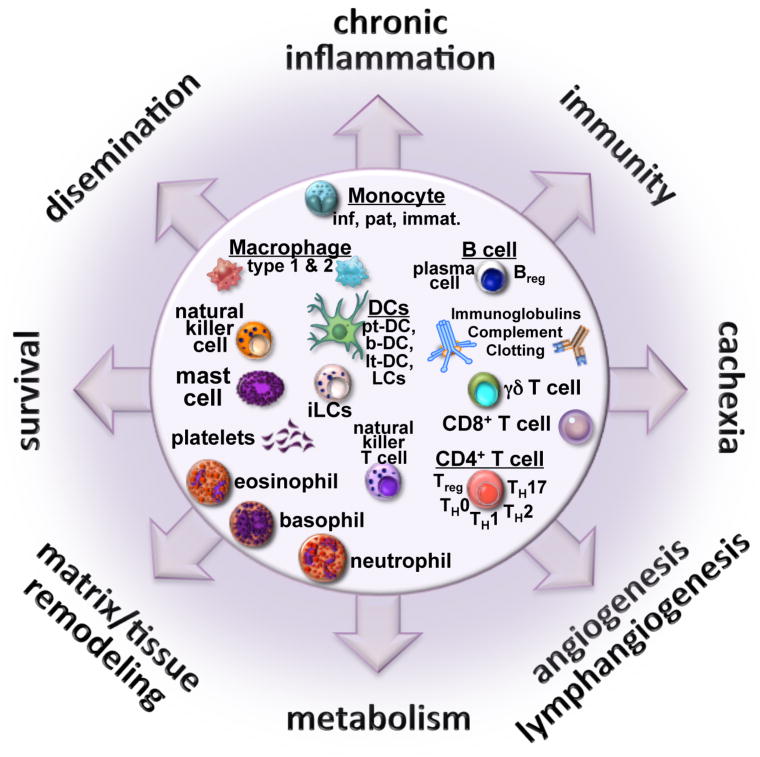Figure 2. Immune-mediated landscape.
The yin and yang implications of tumor-immune system communications form the basis for disease pathophysiology, and at the same time, targets for therapeutic intervention. The disease landscape emerging from these multi-factorial interactions is orchestrated by the three compartments, i.e., the cancer, the immune system and the host. The outputs are numerous and dramatically opposite, as well as both local and systemic, and include: immunity that might control cancer; chronic inflammation which can be linked with tissue remodeling processes and metabolic changes that support neoplastic cell survival and primary tumor development; angiogenesis and lymphangiogenesis that can also support metastatic dissemination; as well as systemic consequences for the host including cachexia. Clearly, therapy going forward will require a well-timed and orchestrated combination of therapies, targeting multiple modes of communication and effect, to combat this multi-factorial disease taking into account the patients’ steady-state commensal bacteria complexity and load, and how that is impacted by therapy.

